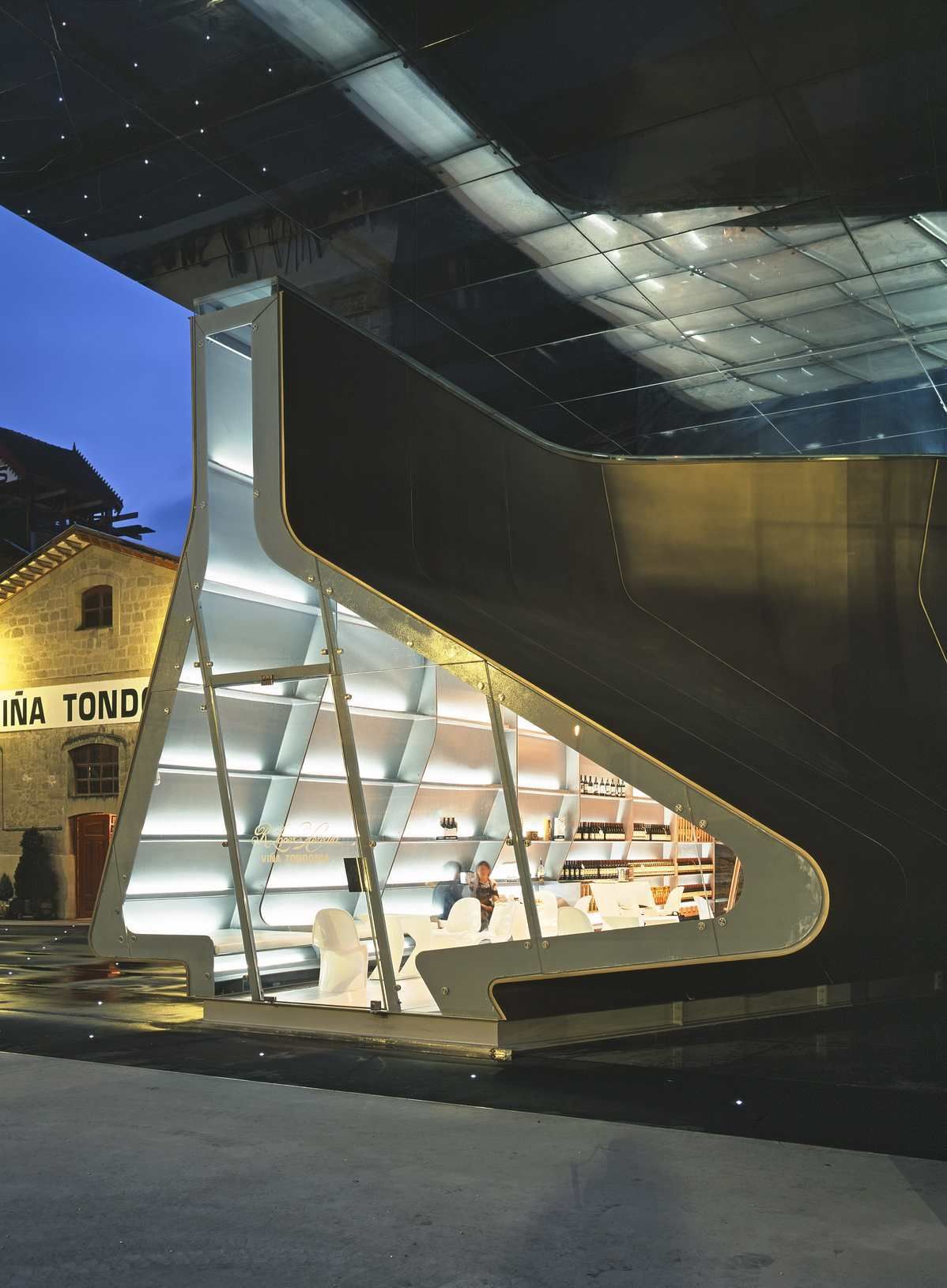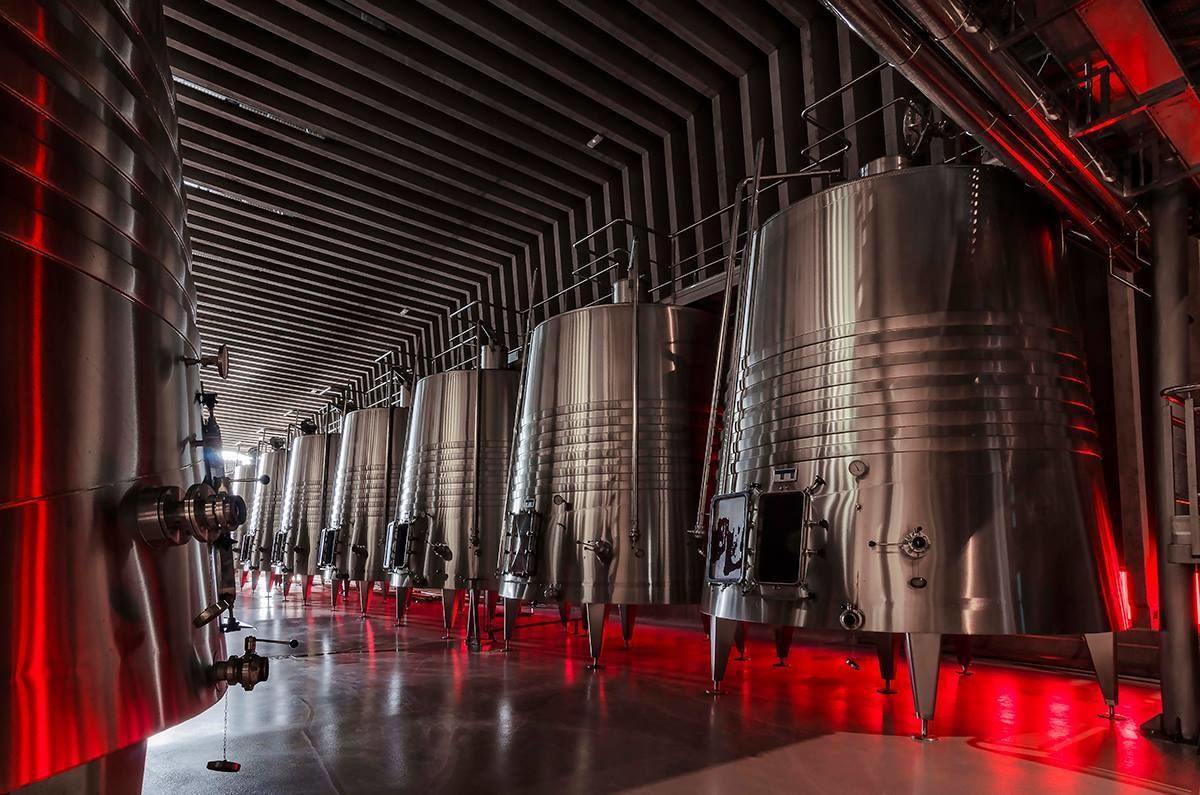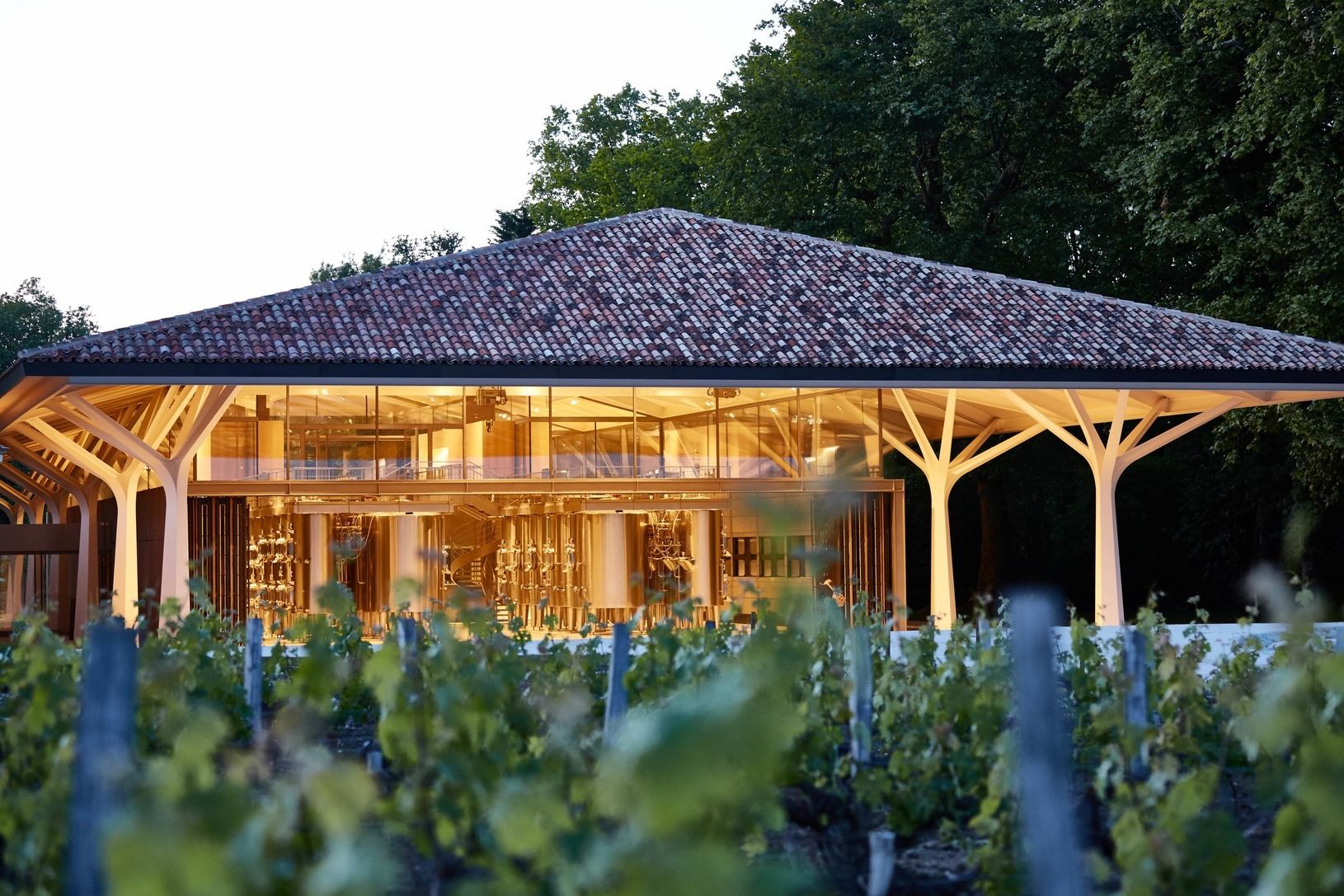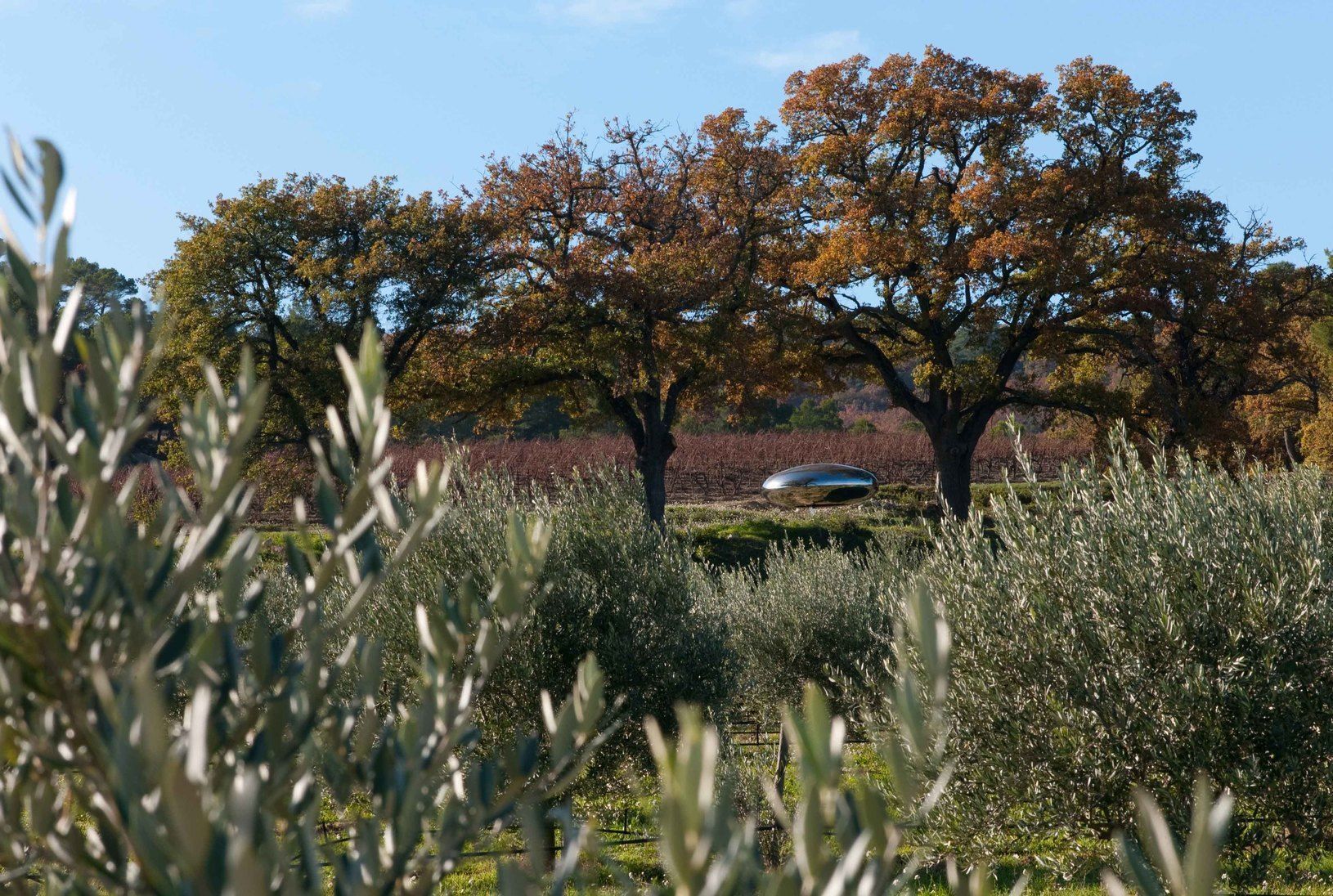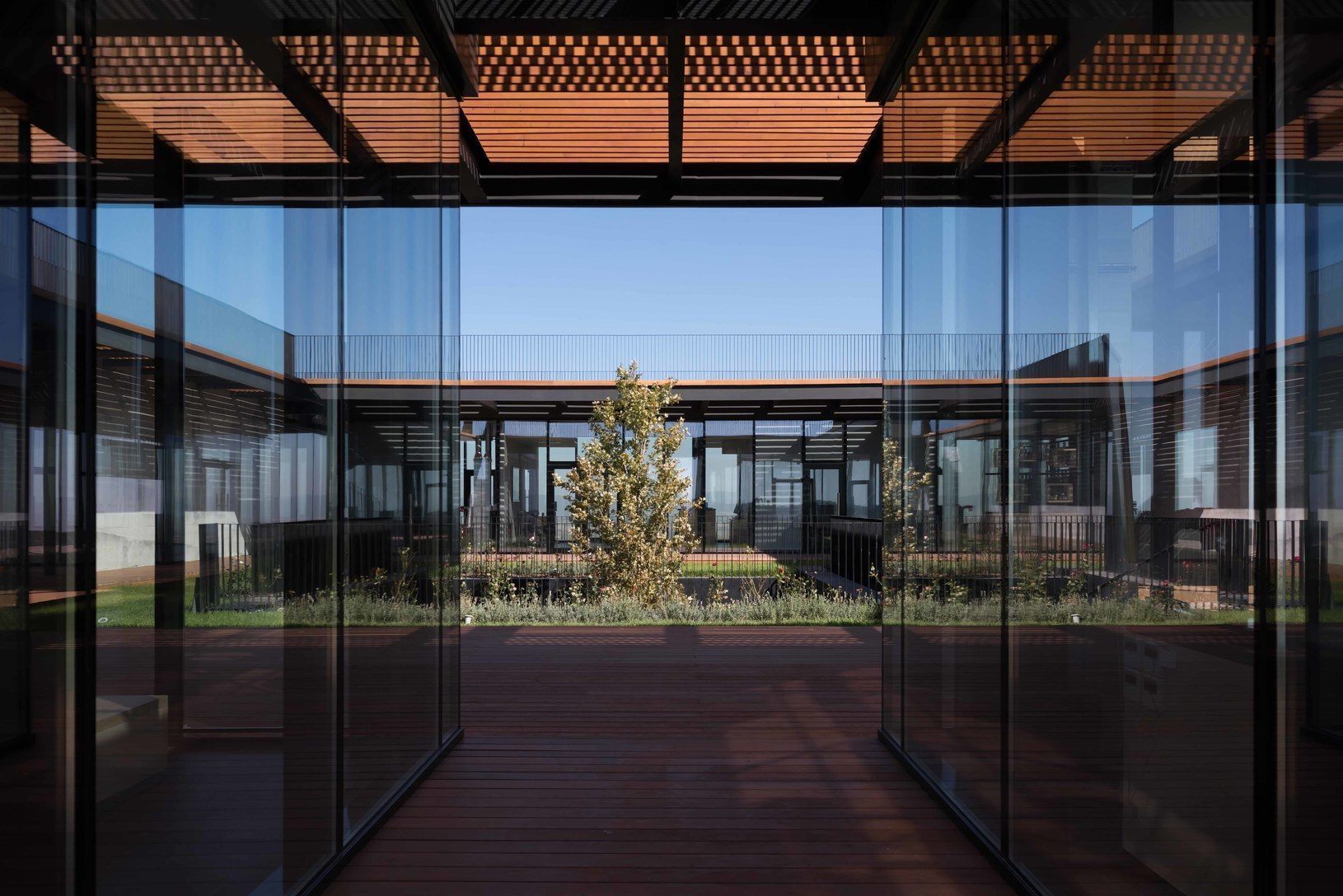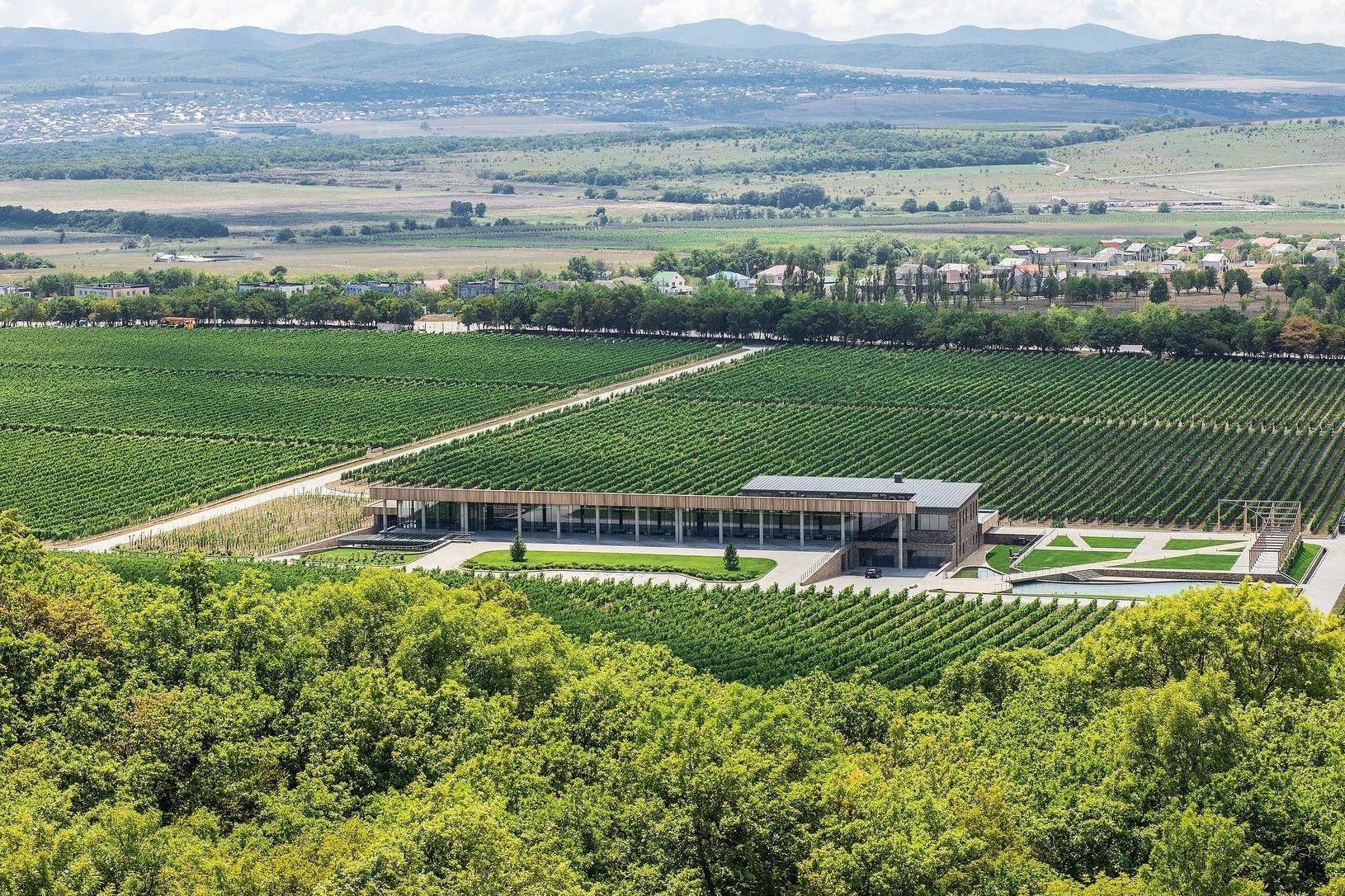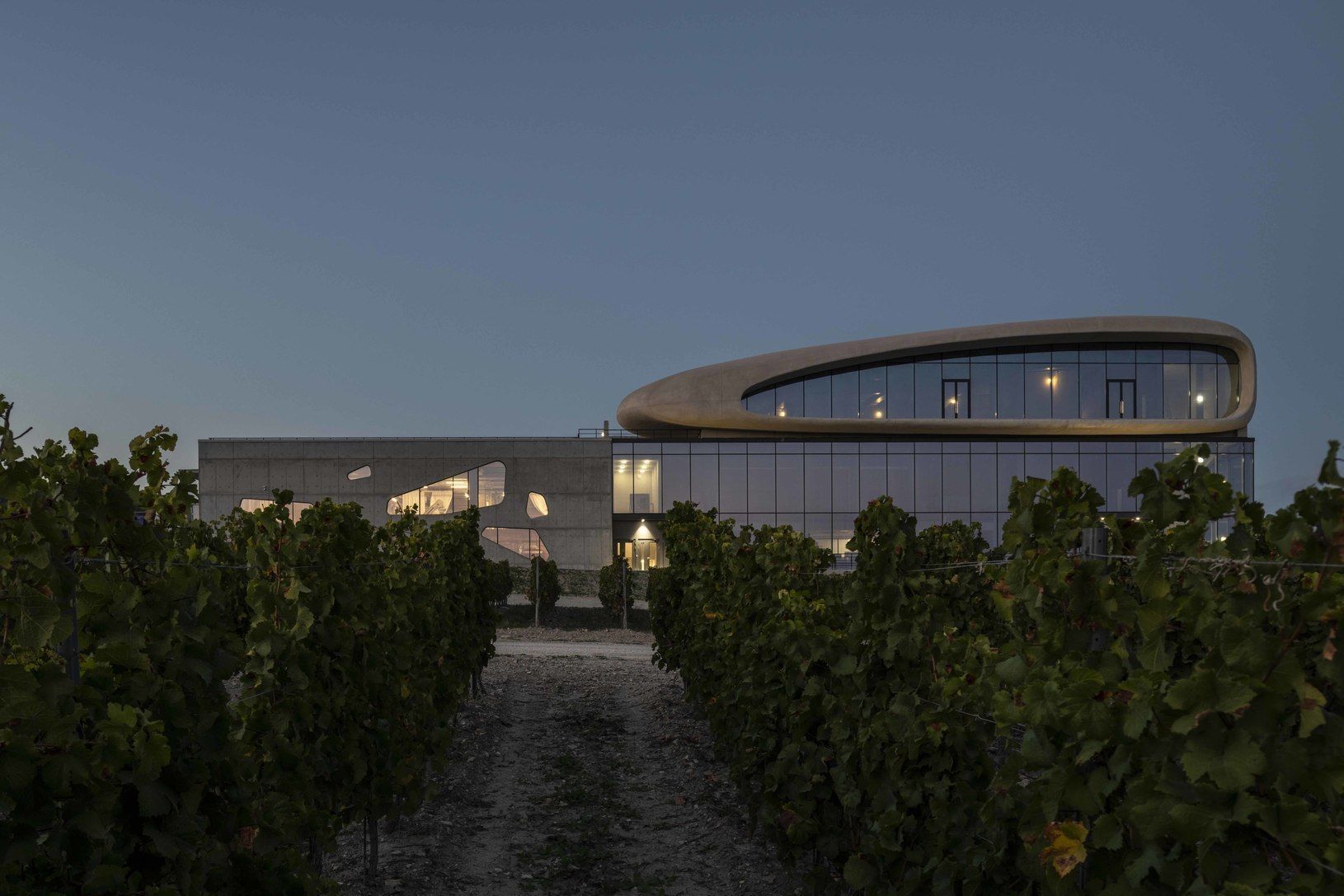Architectural historian, journalist and lecturer
There has been a real boom in wine construction in the last 20 years: what relatively recently were purely utilitarian buildings are now becoming real architectural attractions, wine tourism routes are turning into archi-wine tours, and you can now see the lion’s share of the most famous architects in the list of winery creators.
About the author
Marina Yushkevich: architectural historian, journalist and lecturer
Marina loves architecture and wine equally, but so far she is much better at architecture. Having finished this article, Marina passionately wants to visit the “architectural” wineries of the Krasnodar Region, – and when the borders are open, to travel to Rioja – to enjoy both of her hobbies at the same time.
Evgeny Kotelevsky – translator
Thomas Anthony – editor
Wineries long ago ceased to be places where people only produce wine. The wine brand is also created here, as well as many impressions and memories connected with it. For this, in addition to technology, traditions, and winemakers’ secrets, other acceptable tactics are employed.
Trying to stand out and create an iconic product, winemakers invite the big stars of architecture, even Pritzker Architecture Prize winners (the Pritzker Architecture Prize is the most important award of the industry, a kind of “Architecture Oscar”).
Gehry and Calatrava
Very often the star architects build the showcase parts of the complex, the so-called “white wineries” – the parts that you aren’t ashamed of showing to tourists – while leaving the lion’s share of production facilities in completely utilitarian buildings. Or they simply construct some symbolic projects on the territory of the winery that have no direct relationship with the wine production: wine-tasting rooms, galleries, recreational spaces.
For example, in the town of El Ciego in La Rioja (110 km from Bilbao), in 2006 Frank Gehry built an amazing-looking hotel on the territory of one of the oldest wineries, Marques De Riscal, with highly recognizable facades of bent titanium ribbons.
Frank Gehry is a cult figure in the Bilbao area. It was his architectural masterpiece, the Guggenheim Museum, that gave the city both tourist and economic miracles, which became known to the whole world as the “Bilbao effect.” Marques De Riscal became a world-famous center of wine tourism with the hotel, a restaurant, and spa – and now according to The Guardian, it is among the TOP-10 most visited wineries in the world.
Another mandatory stop on the architectural and wine route of Rioja is Bodegas Ysios (2001), by the famous Spaniard Santiago Calatrava, author of the City of Arts and Sciences in Valencia. He has created a remarkable avant-garde image, which looks like either a huge organ, or a line of mountains (drawn with large pixels) surrounding the winery.
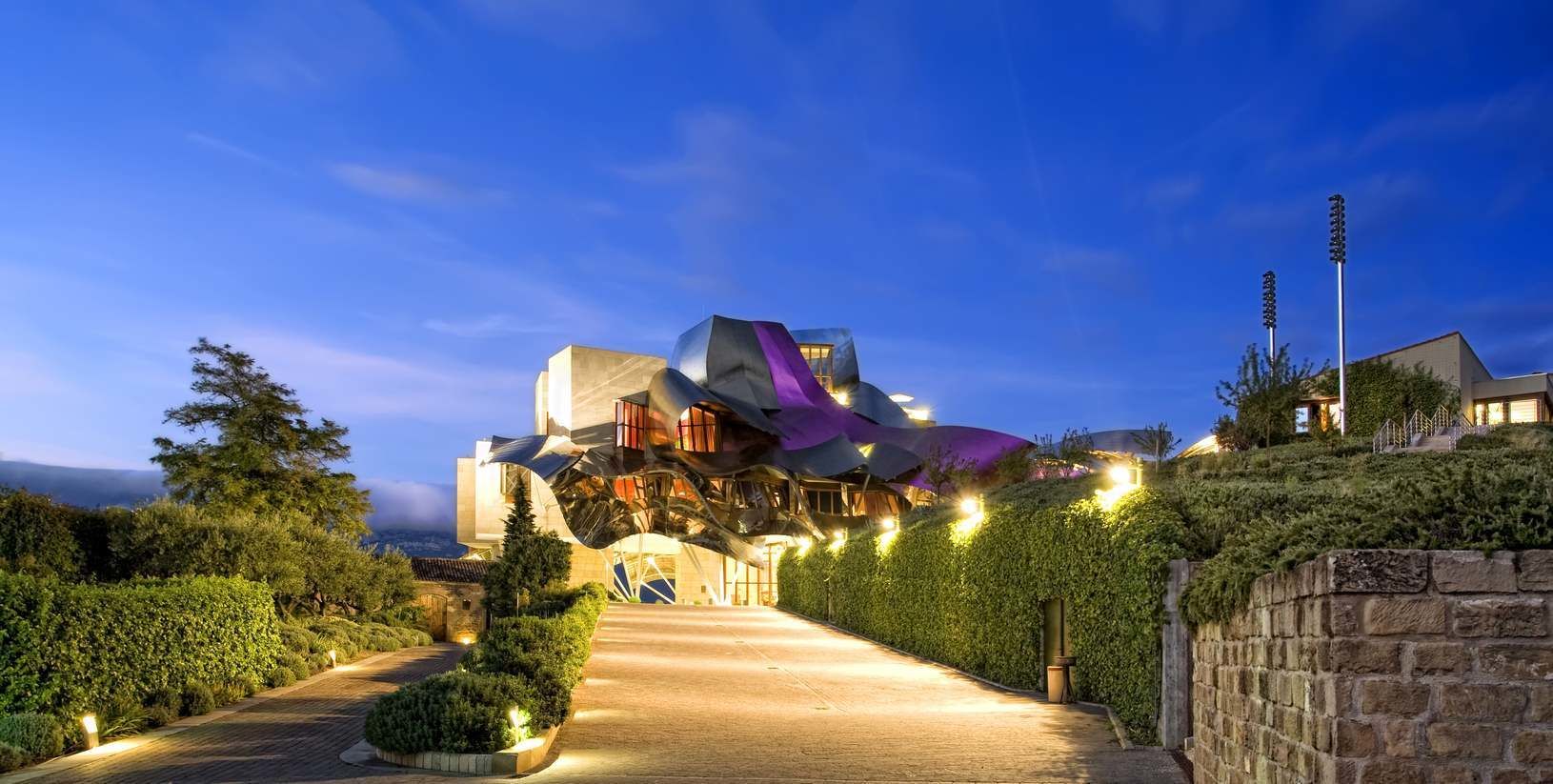
Marques De Riscal. Photo: © Marques De Riscal
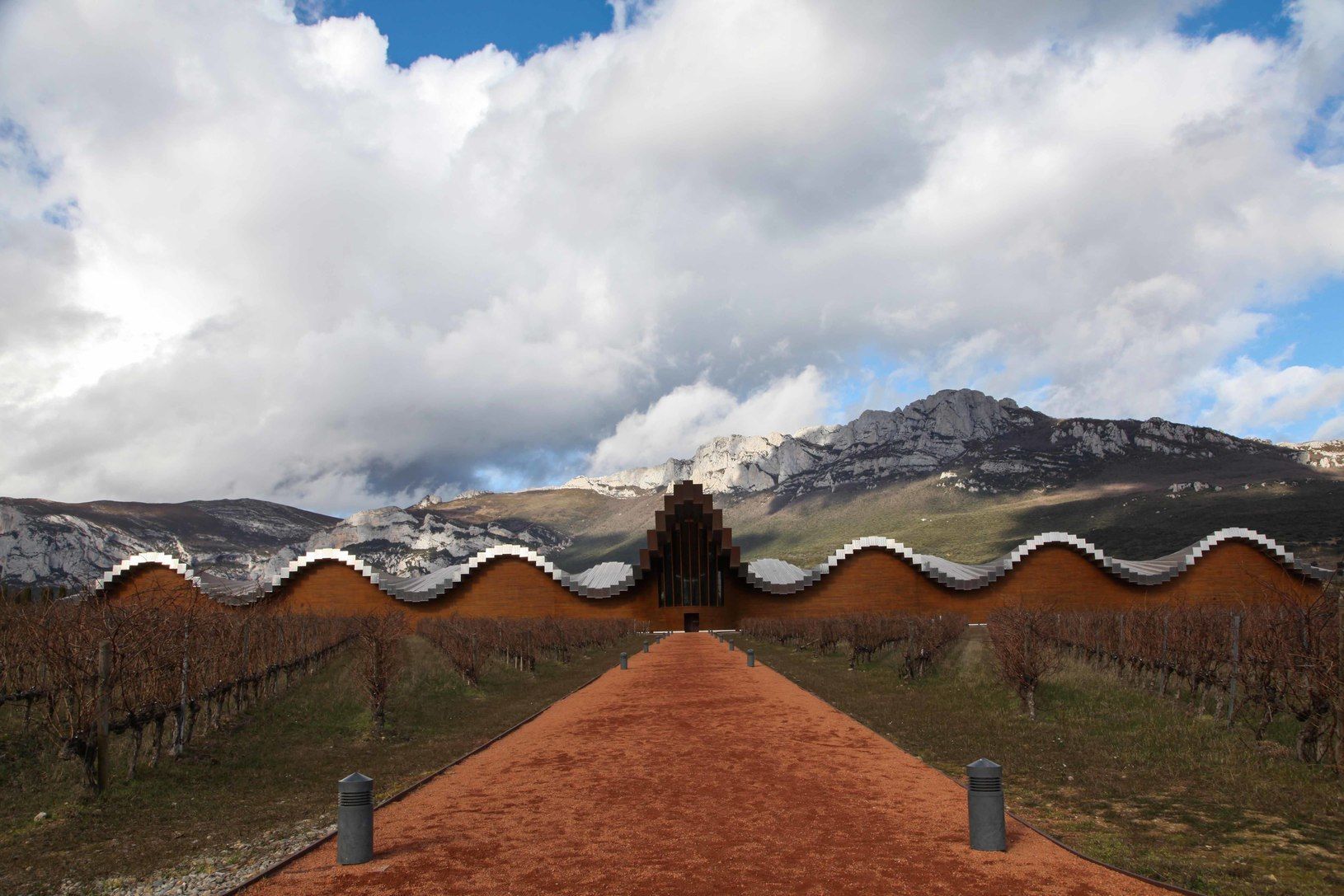
Bodegas Ysios. Photo: © Tatyana Platonova
Hadid and Foster
The winery López de Heredia Viña Tondonia decided to join “the architecture wine route” in 2006 and invited Zaha Hadid, the legendary first female architect to receive the Pritzker Architecture Prize. She designed the tasting hall, where the unusual geometry and complex twists typical of her style come together in the image of a decanter.
Here in Rioja also stands Bodegas Portia, the first of the wineries by the enormous global bureau Foster + Partners, known for its London skyscraper in the form of gherkin. It was only the first one, because later Sir Norman Foster built several more wineries. When he first started to work, he immediately admitted that he knew virtually nothing about wine production. When he figured it out, he understood that the main steps in wine creation are fermentation, aging in barrels, and aging in bottles. He invented a building in the form of a shamrock, where these steps of wine production are clearly divided visually. It turned out both convenient and illustrative: from the central glassed space one can see all the steps of wine production, which tourists always like.
In 2015 Sir Foster designed the new building for Château Margaux in Bordeaux (a separate building for the production of white wines), delicately fitting it into a UNESCO-protected landscape, and is now designing a dome-winery: Le Dôme in Saint-Émilion.
View from Above
Today “star” wineries are built all around the world and in very different styles. Architects stick to their recognizable approaches. One of the most prominent representatives of European postmodernism, the Swiss Mario Botta, created for the Petra winery in Italian Suvereto a beautiful example of architecture with a complex body and roof gardens.
Both "fathers" of hi-tech, British Richard Rogers and Italian Renzo Piano, the creators of the Pompidou Center in Paris, also actively worked in this area. True to their style, they took the path of romanticizing the industrial component. Rogers designed Bodegas Protos in Peñafiel (Ribera del Duero), which looks especially good from above: its equal waves of wide reddish-brown vaults are fit into an equilateral triangle. And this is no coincidence: tourists who come to Peñafiel usually visit the castle standing on the hill, and it is important to keep the view from there almost intact – and at the same time make them want to take a closer look at the building.
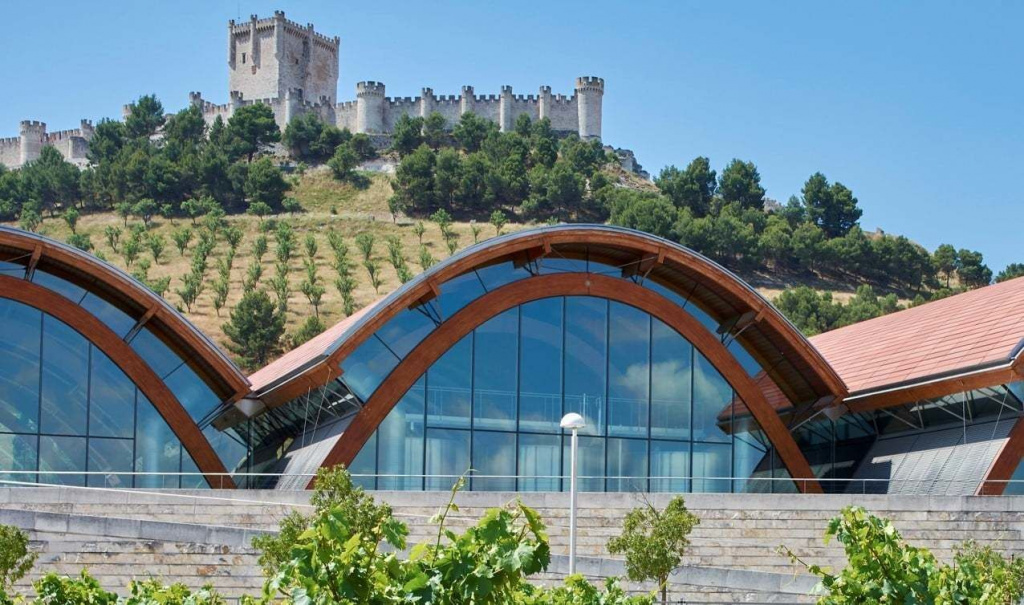
Bodegas Protos. Photo: © Bodegas Protos
Arenas for Barrels
Renzo Piano created the Rocca di Frassinello winery on the Tuscan coast (a project in Maremma by the owners of Castellare di Castellina), keeping true to the industrial style, but softening it with vine-covered supports and surprising everyone with an incredible cellar full of barrels, similar to an antique arena. The similarity is especially enhanced when chamber music concerts are given here.
The wineries of the New World are also moving in this direction. The most famous example is the Dominus winery in Napa (founded by the connoisseur and collector of contemporary art Christian Moueix, the legendary manager of Pétrus in Pomerol), built of gabions filled with basalt stones. It was created by the Swiss duo Herzog & de Meuron, famous for the building of the Elbe Philharmonic in Hamburg and the rebuilding project of the Badayevsky plant in Moscow, and in fact Herzog & de Meuron received their Pritzker Prize in 2001 for the winery.
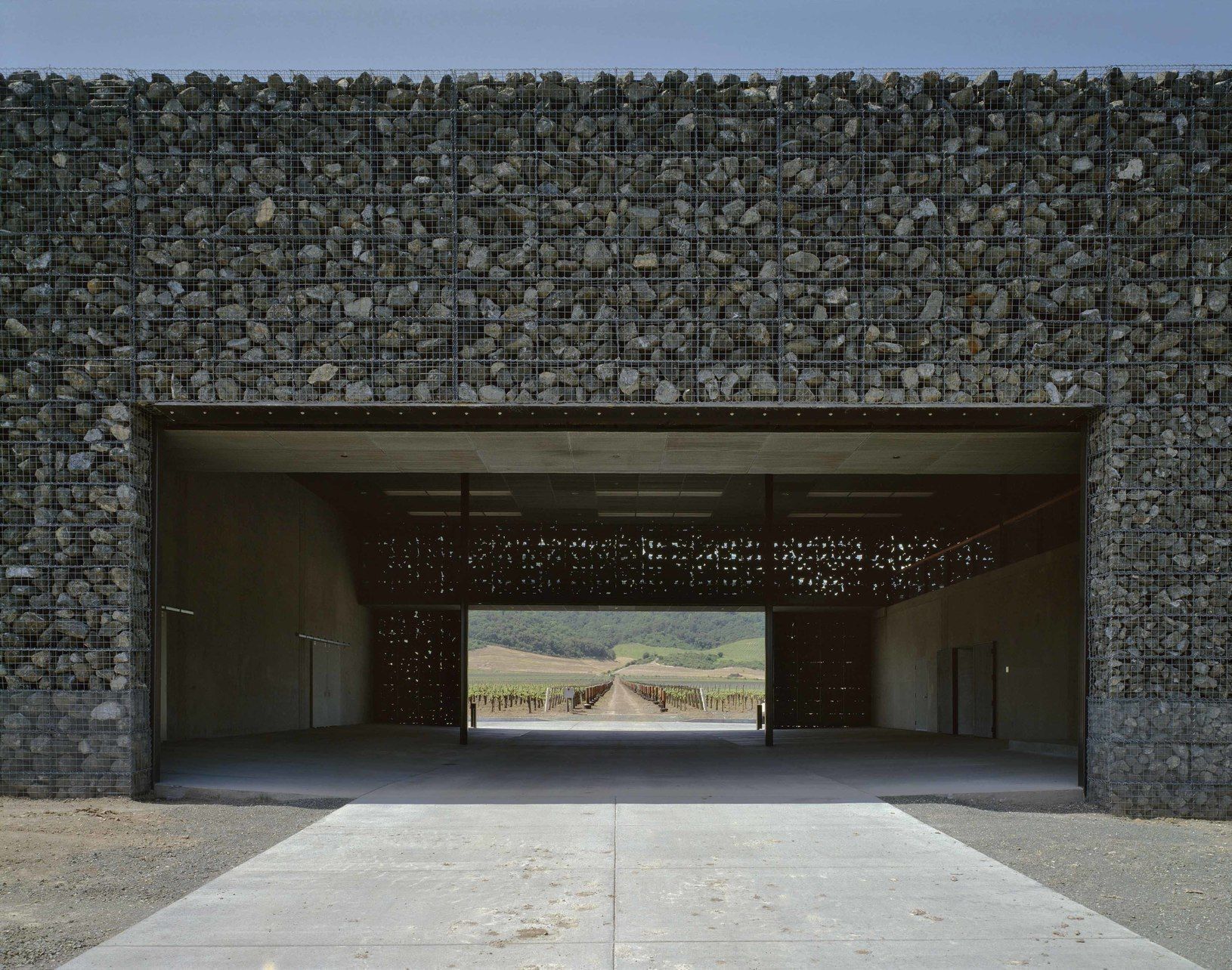
Dominus winery. Photo: © Margherita Spiluttini/Herzog & de Meuron
Dominus winery. Photo: © Margherita Spiluttini/Herzog & de Meuron
Chateau Games
Old, respectable and very successful wine houses also invite modern stars – to emphasize that while history is history, they also keep pace with the times.
For example, the managers of the Château Les Carmes Haut-Brion estate in Bordeaux‘s Pessac-Léognan, dating back to the 16th century, invited the ironic and talented designer Philippe Starck to design their new building. Together with the architect Luc Arsene-Henry, he made a futuristic underground wine cellar here, whose aboveground part is similar either to an alien ship that has landed in the center of a pond, or to the keel of a boat turned upside down.
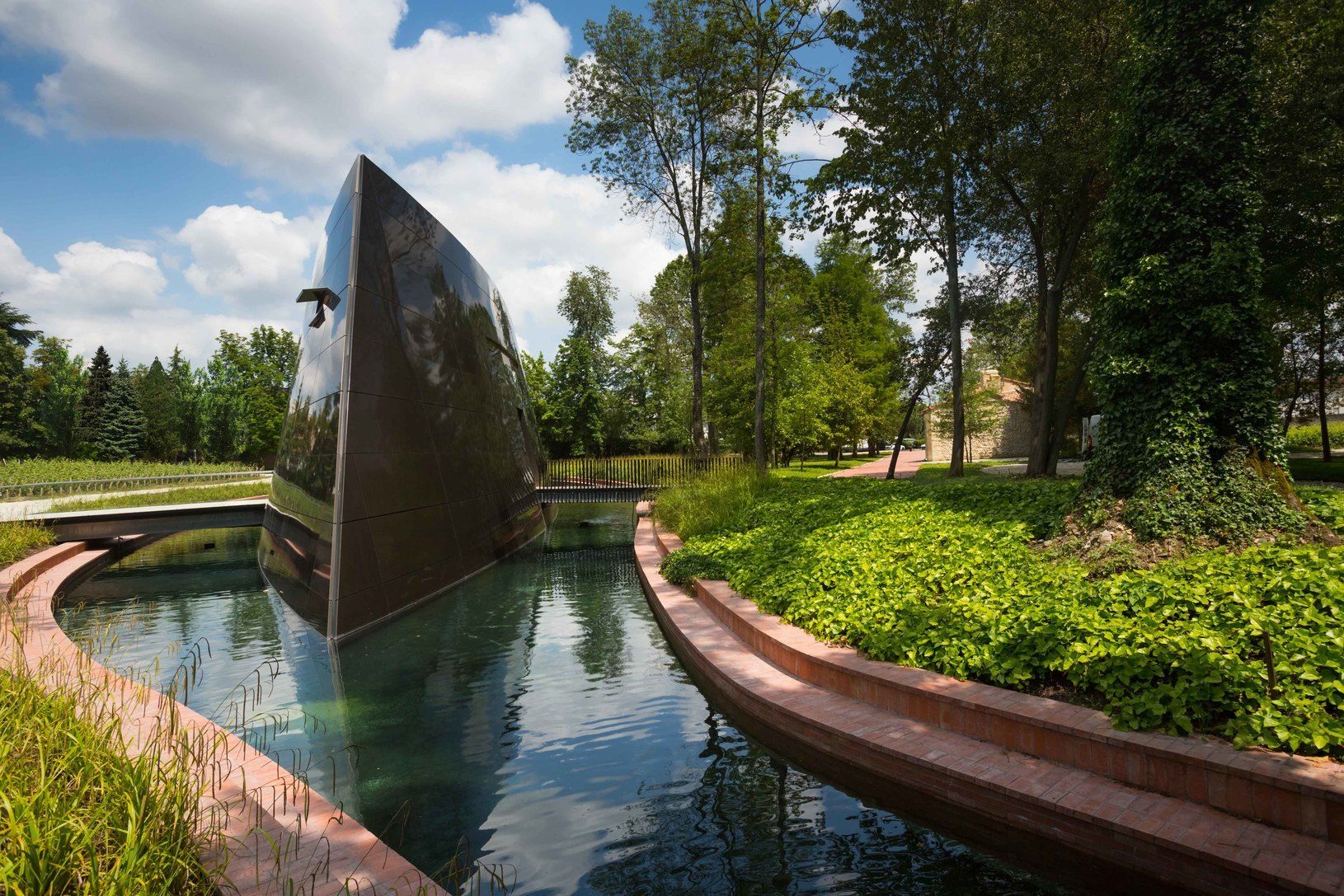
Château Les Carmes Haut-Brion. Photo: © Château Les Carmes Haut-Brion
Marquises in Formation
The Tuscan dynasty of Antinori, which has been making wine for 28 generations, in 2012 rebuilt its flagship winery in Chianti Classico with the help of Archea Associati, creating a full-cycle gravity-flow winery in a surprisingly delicate modern building that literally merges with the landscape. Built into the hillside, the main focus is the striking weathered-steel spiral staircase leading to the grape-planted roof.
Last year, Masseto got its own brand-new winery with a futuristic look. Prior to this, the iconic Super Tuscan was produced in the same building as Ornellaia (both brands are owned by Marquis Frescobaldi). The Masseto winery, called “The Quarry,” was created by the famous Milanese studio ZitoMori in an ascetic-minimalist – but incredibly spectacular – manner. Deeply carved into the ancient blue clay, one of the most important elements of Masseto's terroir, the new winery has become a visual symbol of the estate.
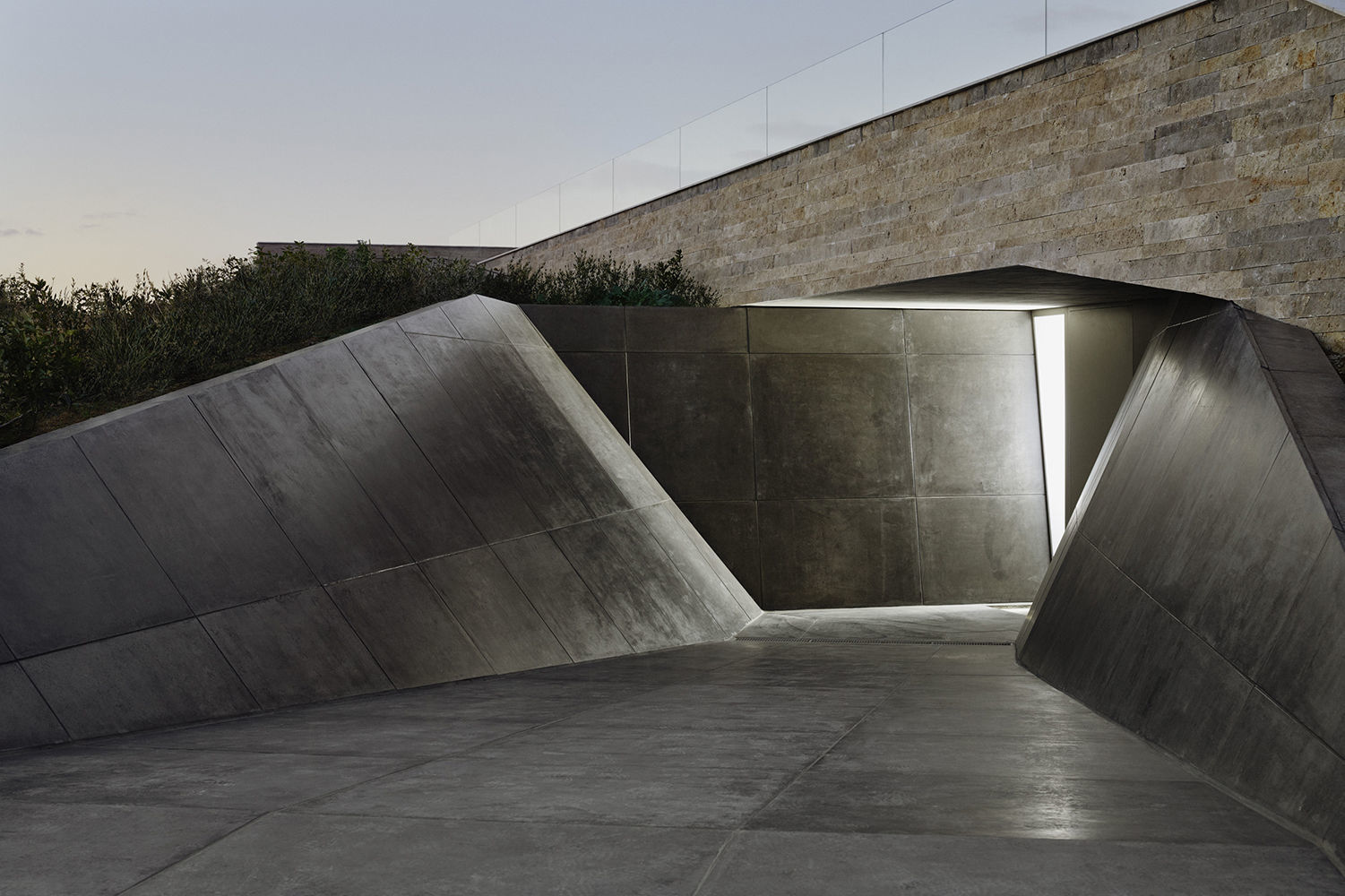
Masseto winery. Photo: © Masseto
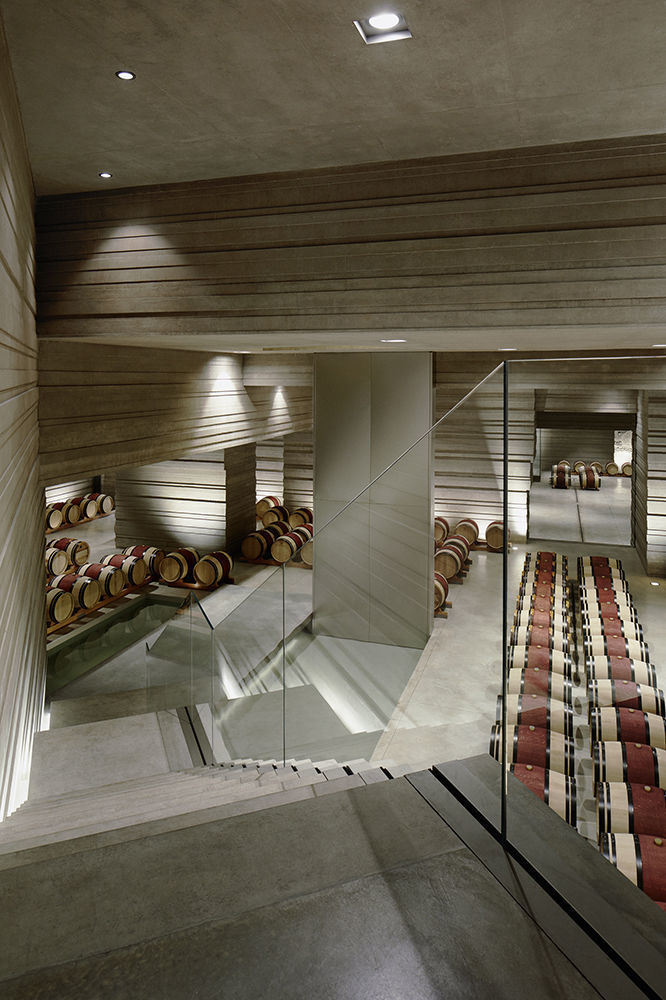
Masseto winery. Photo: © Masseto
Winemakers and Collectors
The desire to develop a tourism aspect is only one (although the most popular) of the reasons for the architectural boom in the wine field. The second reason is more complex. Sometimes it is not experts who enter the field of winemaking, but enthusiasts who perceive wine not only as a business, but also as an occupation for the soul. And here sometimes different passions come together, such as passions for good wine and contemporary art. Among the many examples of this is the Terra Remota winery in the Catalan region of Emporda, where collector Clement Cividino regularly exhibits his treasures. However, the most famous and striking example is, of course, Patrick McKillen's Château La Coste: his winery in Provence is surrounded by art objects from the best artists and architects of the world.
A businessman who made a fortune in real estate, co-owner of the famous London hotels Claridge's, The Berkeley, and The Connaught, he bought a winery about 15 years ago near Aix-en-Provence – with a villa from 1682, paved roads from the Roman Empire, and 120 hectares of vineyards. The bucolic landscape of Provence seemed to McKillen an ideal exhibition hall, so he decided to gather an architectural and art collection from the most high-profile authors of our time. He ordered a fermentation room from Jean Nouvel,* recruited a team and switched the production to biodynamics. The main modernist building, housing the Art Center, office, restaurant, and information center, was created by the great Japanese Tadao Ando, who is known for his attention to natural light and the use of landscape forms in architecture. The pool surrounding Ando's building is decorated with the sculpture Crouching Spider by Louise Bourgeois (a similar scary spider was brought to Moscow by the Garage Museum a few years ago), and sculptures, land-art works, and pavilions are scattered throughout the territory.
McKillen also added Frank Gehry to this list by buying his summer pavilion at auction at the Serpentine Gallery in London in 2008; it was transported to France and reassembled at the winery as a “music room.” And the most recent acquisition (2020) is a "hanging" gallery from Richard Rogers, which, contrary to all the laws of physics, hangs like an unimaginable console over the hillside. Today, several dozen art objects have already been installed on the territory of the winery, but this is far from the end. The impeccable combination of art and wine continues with a Michelin-starred restaurant and a new boutique hotel, where you can stay for the price of 1200 euros. McKillen's collection is designed for the very cream of society.
Jean Nouvel is a one more Pritzker Architecture Prize winner in this story, who also built the winery of Andrey Filatov’s project Art Russe, on the Château La Grace Dieu des Prieurs estate in Saint-Emilion.
Old Stomping Grounds
In Russia, the topic of “wine architecture” is very young, as is the very passion for winemaking. Nevertheless, there are already several examples worthy of travel – not only for the sake of tastings and postcard views of the vineyards, but also for the sake of admiring the special plasticity of good architecture, always a special pleasure.
One of the most successful projects is the Gai-Kodzor wine-making complex, located between Anapa and Novorossiysk. A new tourist center was built here to the project of Moscow architects Kleinewelt Architekten, the refined translucent design of which does not violate the beauty of the surrounding landscape. A simple rectangular volume “melts” into the hilltop, with a stunning view of the Anapa Valley. Solid concrete walls on one side of the building are balanced by huge windows and openings in the other facades, and inside there is a small garden with rare plant species. In addition to the production complex, the winery has a museum space and a cultural center.
Not far away, also near Anapa, the Sikory winery was recently completed, built to the project of the Frenchman Mathieu Brullon and Russian architects. The laconic two-level building fits very delicately into the landscape of Semigorye, thanks to the maximum possible use of natural materials, finishing stone similar in color to the local soil, and a large glass surface.
The latest example of a modern Russian winery with exceptional architecture is the brand-new Côte Rocheuse (Rocky Coast) winery, located in the village of Varvarovka near Anapa. It was designed by Alexander Balabin,“Severin Project,” who says: “Unlike many “white wineries,” the Côte Rocheuse building that we created includes spaces for the full cycle of wine production. The construction of the new winery coincided with the pandemic and the resulting increase in domestic tourism, so the owners of the estate quickly reoriented – instead of panoramic tasting rooms upstairs, there will now be a restaurant with a magnificent view of the sea.”
The gravity-fed winery, whose characteristic silhouette crowned with a rounded “pebble” shape is visible from afar, combines production and tasting areas, and has a roof with a panoramic view which is available for recreation. The building has already been completed, and interior spaces designed for tourists are being finished. The first wine was produced here in the fall of 2020, and the first visitors are already expected this year.
Cover Photo: © Château Les Carmes Haut-Brion.


